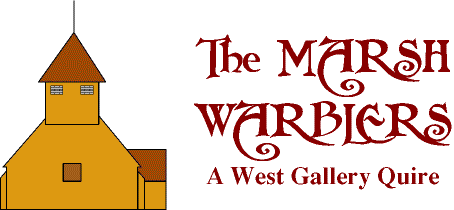
| 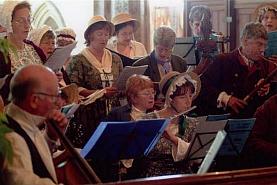
| 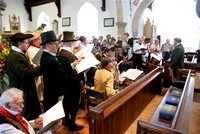
| 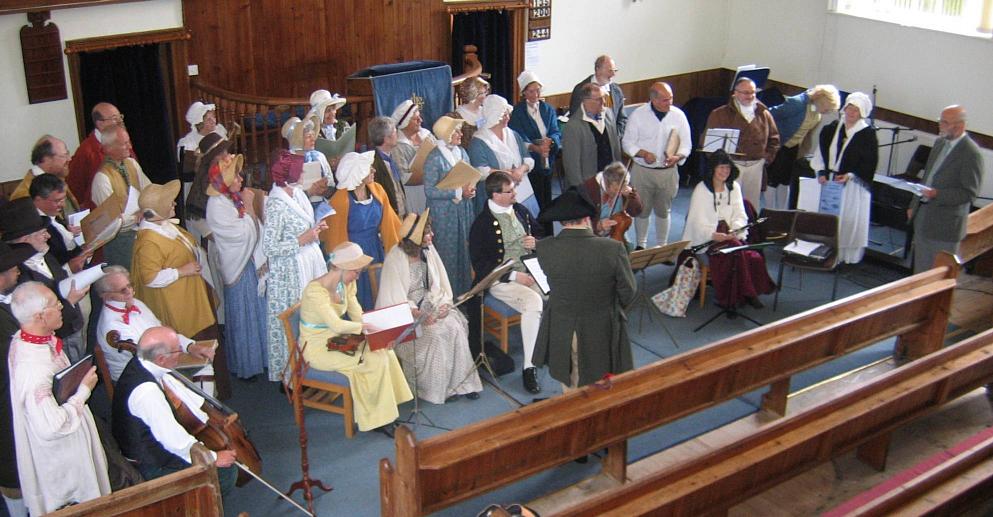
| 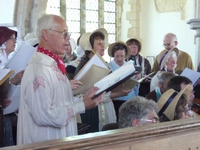 |
Home Page : Contact : Diary of Events : West Gallery Music : Composers : Recordings : Pictures : Research : Links | ||||

| 
| 
| 
|  |
Home Page : Contact : Diary of Events : West Gallery Music : Composers : Recordings : Pictures : Research : Links | ||||
 | ||||||
The Funeral Procession To avoid carrying the coffin on the shoulders for long distances, it might have been taken to church on a bier as shown below. Some were fitted on top of a wheeled carriage to save carrying them. At better-off funerals, the coffin would be covered by the pall which hung down over the bearers. The pall was black on one side, white on the other, ie reversible and could be turned over showing the white side if the deceased was a child or a virgin. Pall-bearers were covered by the pall and held the lower hems; they wore black or white gloves to match the pall. | ||||||
| 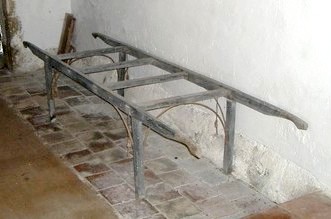 A funeral bier, possibly used for poorer funerals. This one is in Snave church in Kent. | |||||
An Unmarried Woman A garland fresh and fair An early18th century traveller observed: | A Pauper's funeral Where winds the river through the green, A sombre cavalcade is seen, Bearing the coffin, sedate and slow - Where are they should attend the show? Four old men the coffin bear - Mourners and weepers none are there. Four old men, with years bent double, Bear up the pall, and are paid for their trouble. All are dead whom his youth had known - The poor passes on to his grave alone!
| |||||
What did the mourners wear? Hat bands Gloves Favours | ||||||
Music in the service: vs.5. Lord number out my life and days, vs.14. O spare a little, give me space, |
There are many settings of Psalm 39OV to be found in printed and ms sources of church music of the period and here are two to listen to: 1) Verse 5 - an unpublished setting by a local amateur composer, from a ms book used at St.Laurence's church, Catsfield, E.Sussex. Here is the first page. 2) Verse 14 - a published setting by Joseph Key of Nuneaton - found in a ms book which belonged to Robert Bottle and sung in St.Margaret's church, Harrietsham. | |||||
The Committal
Music at The Committal ? When Henry Reed of Alfriston, Sussex, died in 1850, the newspaper reported: However, at Ditchling (also Sussex) in the same year it was not allowed:
|
Pope's Ode - "The Dying Christian to his Soul" The text of this very popular funeral piece, usually referred to as "Vital Spark" was not from the scriptures, but written by Alexander Pope, so that many Anglican clergy in the 18th century refused to have it sung in church. Mourners would sing it at the graveside after the committal or later at the wake. Vital spark of heavenly flame, Hark! they whisper; angels say, The world recedes; it disappears. LISTEN to the most popular setting by Edward Harwood, who started his working life as a handloom weaver in Lancashire. Headcorn Church Singer honoured It was a rare occasion when a member of a church choir received a tribute in the newspapers; one such was for a singer (and ringer) at Headcorn, Kent, who died on 30th December 1815. "DIED: - Last Saturday, at Headcorn, John Furrel, in the 81st year of his age. He had been a singer in the church choir of that place for 70 years, and had also been one of the ringers nearly the same length of time. He was considered one of the finest bass singers in the County, and had never missed attending at his church, more than twice, till within a fortnight of his death. He was a poor man and died in the workhouse, but was so much respected, that between 30 and 40 of the principal inhabitants attended the funeral, at which an excellent sermon was preached by the Rev. Mr. Evans, and after the choristers had sung two funeral anthems in the church, and one over the grave, the remains of this worthy old man were committed to the silent tomb, leaving behind him a character truly worthy of imitation. After the interment, the ringers rang a dumb peal in honour of his memory, as being one of their society for near 70 years." Sadly, no grave stone marks his burial place today. | |||||
The Wake The funeral was followed by a "wake", or gathering of friends and relatives. In William Hone's The Every-day Book published in 1826-7, one such gathering is described: | ||||||
Gravestones and Funeral Monuments in the Georgian era Skeletons and skulls were popular motifs in the 17th and early 18th centuries; these gave way to cherubs or angels from the mid-18th century and to plainer headstones by the 19th century.
| ||||||